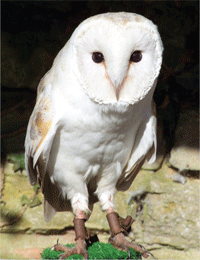A study in the June 10 Journal of Vision uses owls as a model to reveal that the advantage of stereopsis is its ability to discriminate between objects and background. This debunks the idea that the advantage of seeing in stereo must be depth vision.

Two trained barn owls were studied during six behavioral experiments equivalent to those used on humans, which showed the owl’s ability to discriminate random-dot stereograms is parallel to that of a human’s despite the owl’s smaller brain.
The findings revealed that while binocular disparity does play a role in perceiving depth, it allows owls (and humans) to perceive relative depth rather than absolute distance. So, stereopsis is useful not as much in controlling goal-directed movements as it is in recognition.

